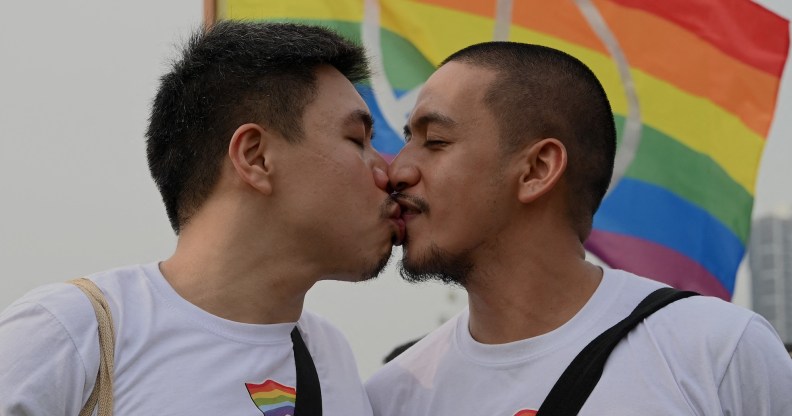What’s the difference between gay and queer?

Gay and queer are labels that have subtle but important differences. (Getty)
To some people, the terms gay and queer are one and the same, but that’s not exactly the case, with several key differences between the two.
As Pride Month 2024 is approaching, celebrating the full LGBTQ+ spectrum including gay and queer people, let’s start from the beginning.
Both words are derived from definitions that are different to their more popular current meanings.
The historical origins of the terms ‘gay’ and ‘queer’?
The term ‘gay‘ has a complex history. Originally, in the 12th century, it was derived from the Old French word ‘gai’, meaning joyful or carefree. However, by the 17th century, the word had evolved to mean someone who was addicted to pleasures and dissipations, often being used to describe prostitutes or promiscuous individuals.
By the late 19th and early 20th century, ‘gay’ was being used in English-speaking countries as a euphemism for being a homosexual, although it was still considered slang. It wasn’t until the mid-20th century, specifically during the gay liberation movements of the 1960s and 1970s, that the term ‘gay’ was widely adopted by the homosexual community as a preferred term over ‘homosexual’, which was seen as clinical and pathologizing.
On the other hand, ‘queer’ has a different historical trajectory. The term ‘queer’ comes from the German word ‘quer’, which means ‘across’ or ‘transverse’. In English, it was originally used in the 16th century to describe something strange, odd, or peculiar.
Queer vs Gay
Since the original meaning of gay was ‘light-hearted and carefree’, while queer originally meant ‘strange or odd’ the latter is still offensive to some, as it has been used pejoratively in reference to LGBTQ+ people.
For this reason, the word queer is still offensive to some, as it has been used pejoratively in reference to LGBTQ+ people.
Now, the term gay, as Stonewall states, “refers to a man who has an emotional, romantic and/or sexual orientation towards men.”
It is also “a generic term for lesbian and gay sexuality – some women define themselves as gay rather than lesbian”.
What does queer mean?
If we look further down Stonewall’s glossary of terms, queer is listed as “a derogatory term for LGBT individuals” – but, the charity is keen to emphasise, this is “in the past”.
“The term has now been reclaimed by LGBT young people in particular who don’t identify with traditional categories around gender identity and sexual orientation,” the entry continues.
However, the organisation cautions, the term is “still viewed to be derogatory by some”.
As suggested above, the term queer is sometimes preferred because it is ambiguous.
It therefore allows people to avoid the more rigid boundaries associated with labels like gay, lesbian, bisexual or transgender.
Queer is not as specific as gay, for instance.
It doesn’t reveal your gender, or the gender of your partner, whereas lesbian, for example, usually implies that you’re a woman attracted to other women.
Similarly, if people are attracted to people across the gender spectrum, they may not want to identify as bisexual, because the term implies a person is attracted to just two genders.
Other terms are available for people who feel this way, like pansexual, but queer has become a useful umbrella term for some sexual and gender minorities who do not fit into the traditional categories around gender identity and sexual orientation.
So, queer essentially means ‘a person who is not straight’, while gay means ‘a person who is attracted to the same sex’.
Ultimately, however, it’s up to the individual as to how they label – or do not label – themselves, and opinions on the subject certainly do vary.
PinkNews has its own glossary of LGBTQ+ terms to help your understanding of key words.

